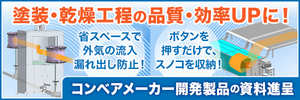1~45 item / All 144 items
Displayed results
Filter by category

Multilingual educational anime for foreign staff
We offer anime training in easy Japanese, English, Vietnamese, and other languages for foreign workers. Since it allows for visual understanding of hygiene management, safety rules, and work procedures, it is effective in preventing troubles and facilitating early integration into the workforce.
















































